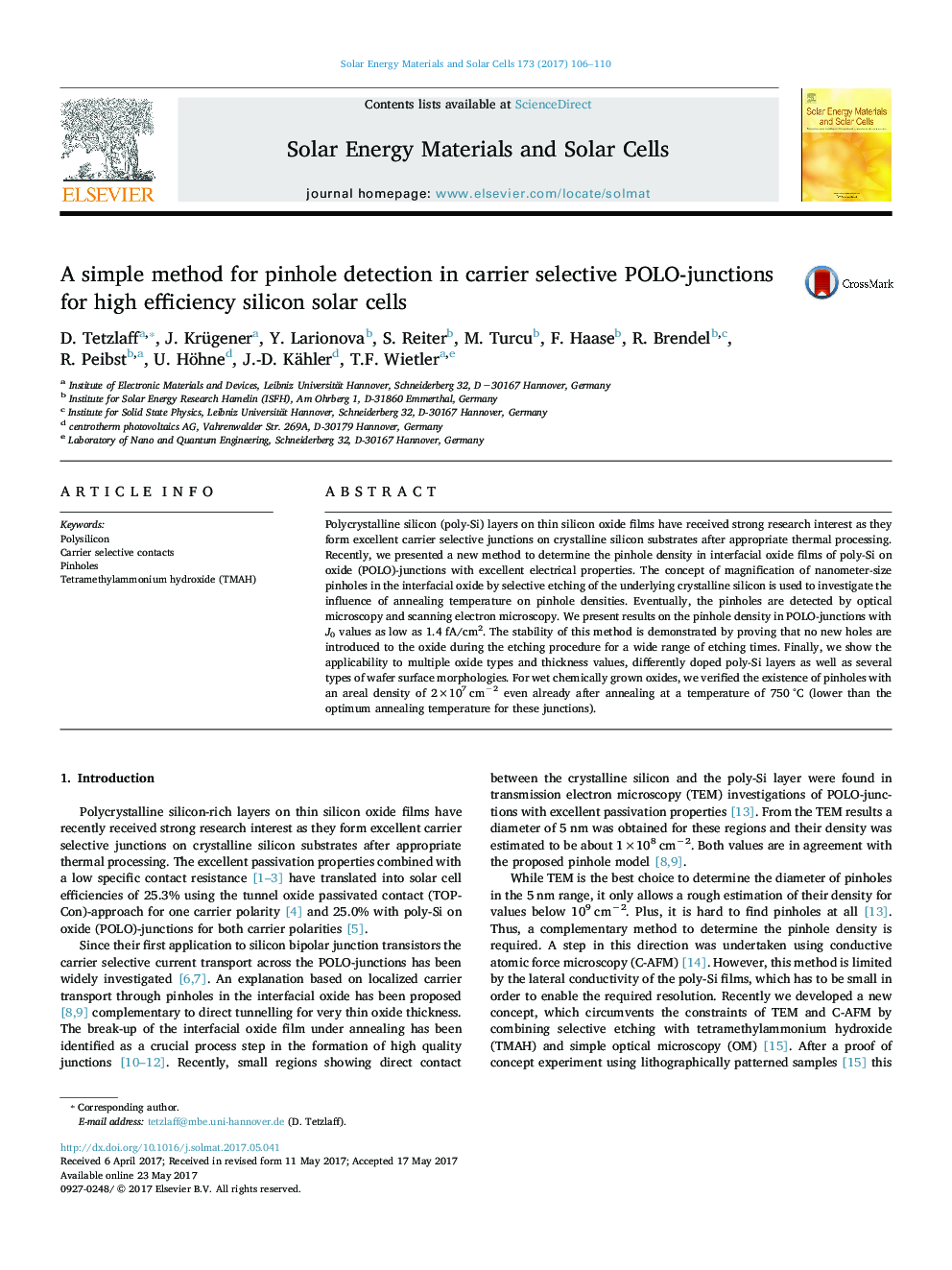| کد مقاله | کد نشریه | سال انتشار | مقاله انگلیسی | نسخه تمام متن |
|---|---|---|---|---|
| 6456792 | 1420650 | 2017 | 5 صفحه PDF | دانلود رایگان |

- Pinhole densities are determined after selective etching with TMAH.
- We prove the stability and versatility of the etching procedure.
- Pinholes are found in all analyzed samples with varying parameters.
- The relation between J0 and pinhole density matches with the pinhole model.
Polycrystalline silicon (poly-Si) layers on thin silicon oxide films have received strong research interest as they form excellent carrier selective junctions on crystalline silicon substrates after appropriate thermal processing. Recently, we presented a new method to determine the pinhole density in interfacial oxide films of poly-Si on oxide (POLO)-junctions with excellent electrical properties. The concept of magnification of nanometer-size pinholes in the interfacial oxide by selective etching of the underlying crystalline silicon is used to investigate the influence of annealing temperature on pinhole densities. Eventually, the pinholes are detected by optical microscopy and scanning electron microscopy. We present results on the pinhole density in POLO-junctions with J0 values as low as 1.4 fA/cm2. The stability of this method is demonstrated by proving that no new holes are introduced to the oxide during the etching procedure for a wide range of etching times. Finally, we show the applicability to multiple oxide types and thickness values, differently doped poly-Si layers as well as several types of wafer surface morphologies. For wet chemically grown oxides, we verified the existence of pinholes with an areal density of 2Ã107 cmâ2 even already after annealing at a temperature of 750 °C (lower than the optimum annealing temperature for these junctions).
Journal: Solar Energy Materials and Solar Cells - Volume 173, December 2017, Pages 106-110